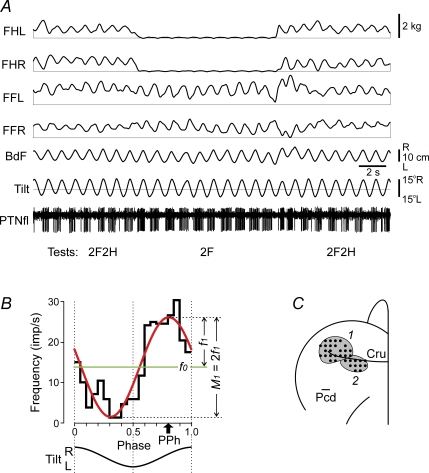Figure 2. Representative example of postural and PTN responses in test 2F2H (standing on all four limbs) and test 2F (standing on two forelimbs), along with areas of recording in the motor cortex.
A, the following traces are shown: PTNfl – activity of a PTN from the forelimb representation of the motor cortex; Tilt – tilt of the platform; BdF – lateral position of the body; FHL, FHR – contact forces under hindlimbs, left and right; FFL, FFR – contact forces under forelimbs, left and right. B, characteristics of neuronal activity: the histogram of spike activity in the tilt cycle (black thick line); 1st harmonic of Fourier image (red line) with its amplitude (f1) and the value of modulation (M1) indicated; mean frequency in the tilt cycle (f0, green line); preferred phase of the discharge (PPh, arrow). C, areas of recording within representations of the fore- and hindlimb in the left motor cortex (1 and 2, respectively; Cru, cruciate sulcus; Pcd, postcruciate dimple). Microelectrode entry points into the cortex (cortical plate openings through which penetrations were made) are combined from two cats and shown by black circles.

